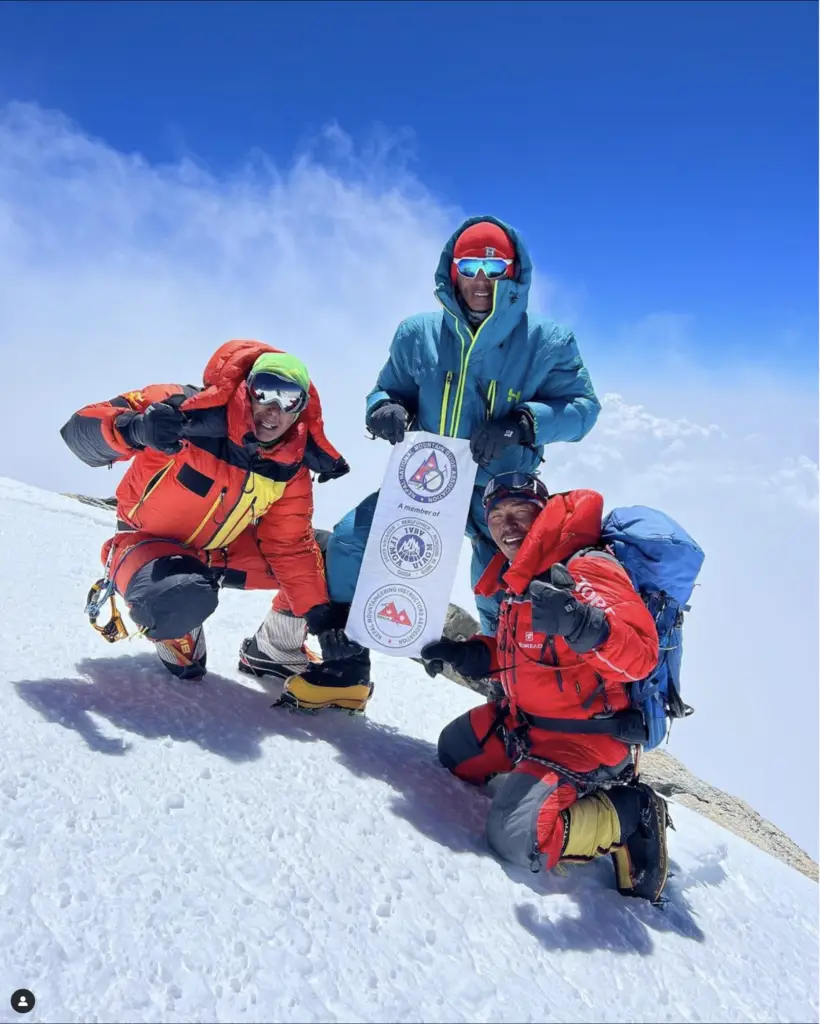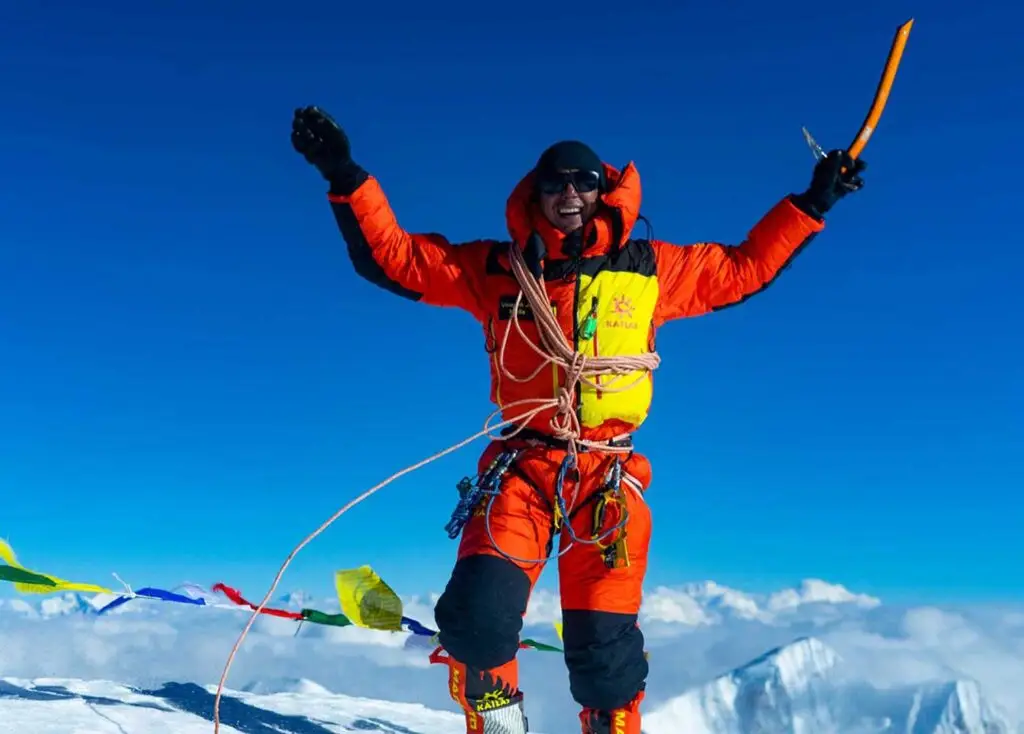Dhaulagiri, which rises 8167 meters above sea level, is the seventh-highest mountain in the world and the highest mountain which lies entirely in Nepal. Dhaulagiri is also known as the “white mountain” or the “shining mountain” because its name is derived from two Sanskrit words: “Dawala” means “white” and “Giri” means “mountain”. Dhaulagiri massif lies northwest of Pokhara in the district of Myagdi at the 28º 41′ 48 latitude and 83º 29′ 42 longitude.
Dhaulagiri aka Dhaulagiri I lies in the Dhaulagiri range, where the eastern limit is the Kali Gandaki. The northern boundary is the Barbung Khola, the Sangda La (5124 meters) Kena Lungpo, and the western boundary is the Bheri River. It consists of peaks like Dhaulagiri I, II, III, IV, V, Churen Himal, Gurja Himal, Junction peak, Hawley peak, Dhampus peak, and many more. The topography of Dhaulagiri is considered unique as the result of uneven rising from the deepest gorge (Kali Gandaki) of the world. As a result, the Dhaulagiri region has very rich biodiversity and is home to hundreds of species, including rare animals like snow leopards, blue sheep.
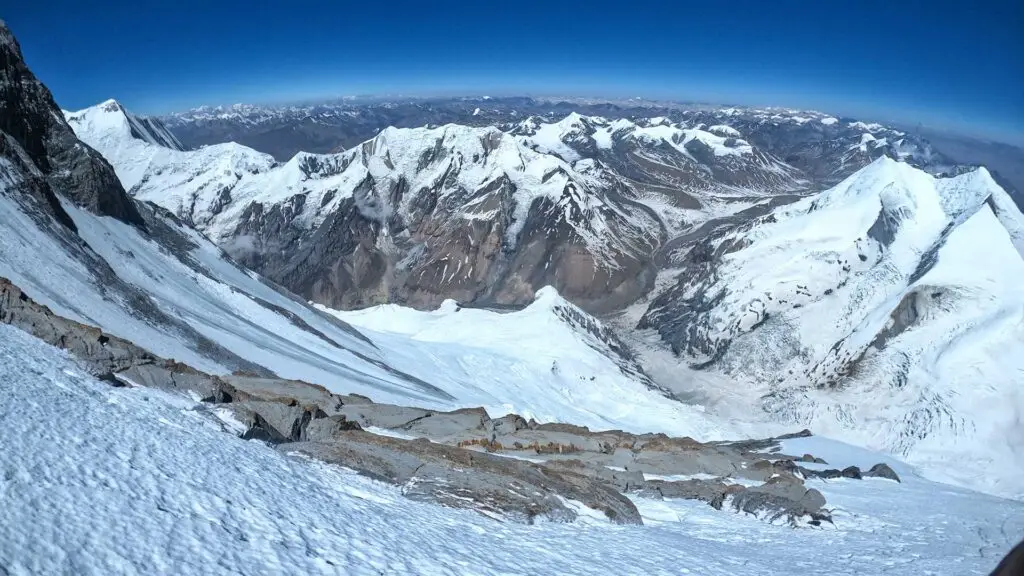
Even though Dhaulagiri was the first 8000-meter mountain attempted by the modern expedition (French) but was one of the last ones to be summited. Due to its hazardous environment, violent winds, huge seracs depositions, and avalanche-prone areas, it took seven attempts in 10 years before finally summiting it in the 8th attempt. The first successful attempt of Dhaulagiri was made by members consisting of Switzerland, Austria, W Germany, and Nepal; Peter Diener, Kurt Diemberger, Albin Schelbert, Ernst Forrer, Nima Dorje Sherpa, Nawang Dorje Sherpa were the first person to scale Dhaulagiri successfully in 1960, May 13.
Dhaulagiri was the first mountain where the logistics were airdropped by a plane and the history of climbing Dhaulagiri before the first summit is even surprising. The French team who thought of attempting the Dhaulagiri didn’t find the trail to reach the base camp at first and finally when that had their sight of Dhaulagiri, they quitted the expedition to Dhaulagiri and headed towards the Annapurna.
There are now 2 caravan routes to the base camp, one through Beni and other from Marpha. We went via the Beni-Darbang route, which is relatively shorter than Marpha trail. Even though there are two routes and comparatively much better than older days, the trails to reach Dhaulagiri base camp is still considered one of the most difficult trails. I hope this trail gets recognized very soon and the government takes an effort to develop a better trail to Dhaulagiri since it carries so much potential and could be one of the best destinations for recreational visitors.
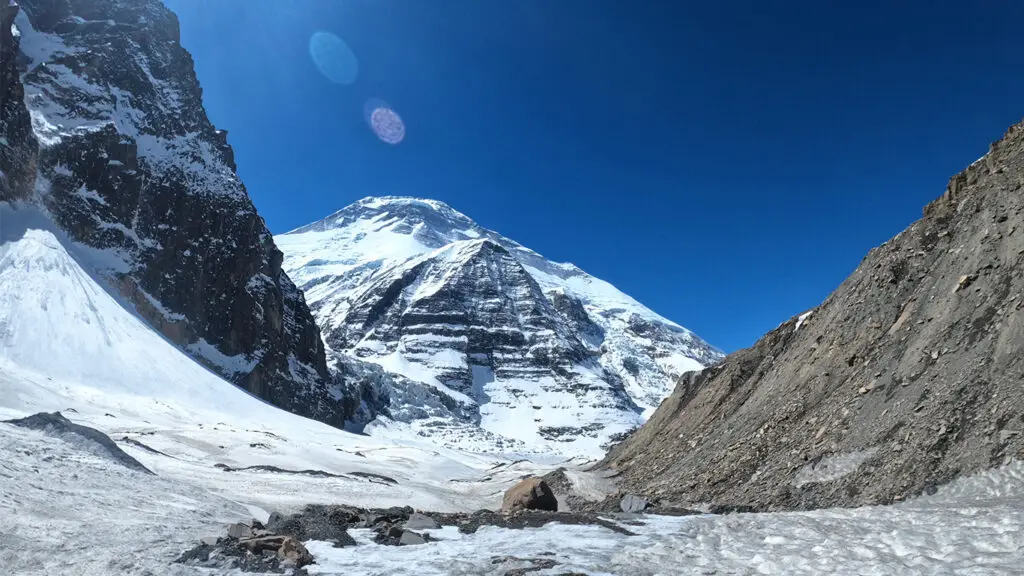
So, our expedition was set for the spring of 2022, just after the covid and tourism and mountaineering were trying to revive in Nepal, so this expedition had to be a successful one in order to disperse the message around the world that Nepal is a safe destination to travel after post covid scenario. When everything was set up here in Kathmandu and all our client arrived here in Nepal, we started our expedition with the aim of reaching the summit of Dhaulagiri. We left for Base camp in the early March.
Twenty-two people made up our climbing squad for this expedition. Mingma G. Sherpa, the brains behind the expedition’s parent organization Imagine Nepal, led the daredevils on their journey. We had customers from all over the world, including the USA, Japan, China, North Macedonia, India, Norway, and Canada. Following the plan’s and the team leader’s instructions and in accordance with accepted standards of mountaineering guiding, we set up a system in which each customer was assigned to one and only one guide.
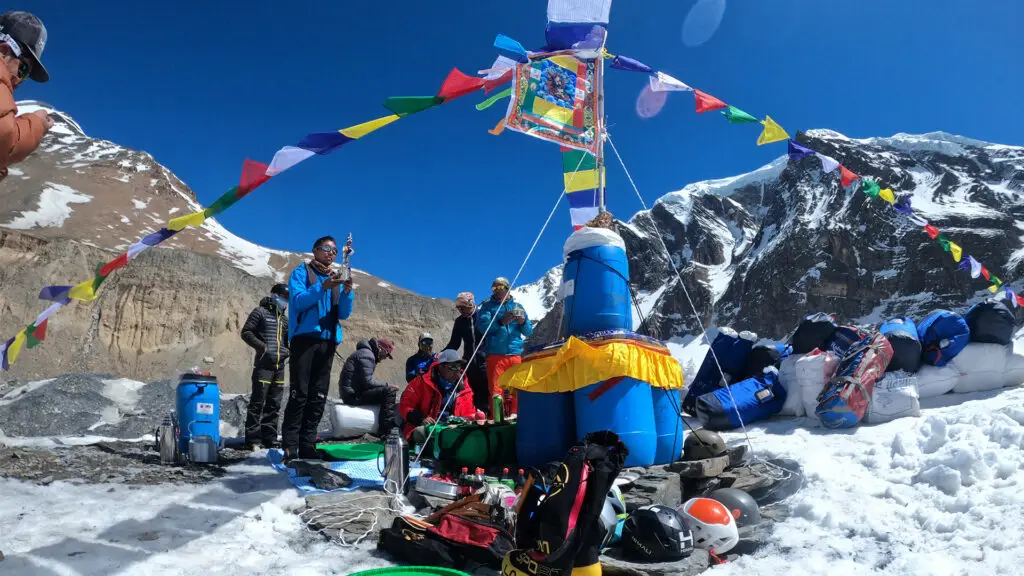
The exceptional and devoted Canadian mountaineer Jill Wheatley was a joy to guide. We had planned to make two trips up to the higher camps from base camp, before pushing for summit. The camps for the expeditions were established in the same places as the previous year. The distance between camps I and II was seriously hindered by deep crevasses, making the first push of the acclimatization rotation much more difficult than anticipated. These fissures constituted a major barrier. Thanks in large part to the refresher course provided by the IFMGA mountain guides at base camp, all of the climbing team members safely traversed the vast crevasses. We were all successful, but I have to say that my climbing partner Jill, who was the most seasoned and accomplished of the group, deserves our highest accolades. The level of her skill is astounding. We rested for a time at Camp I, then moved on to Camp II the same day.
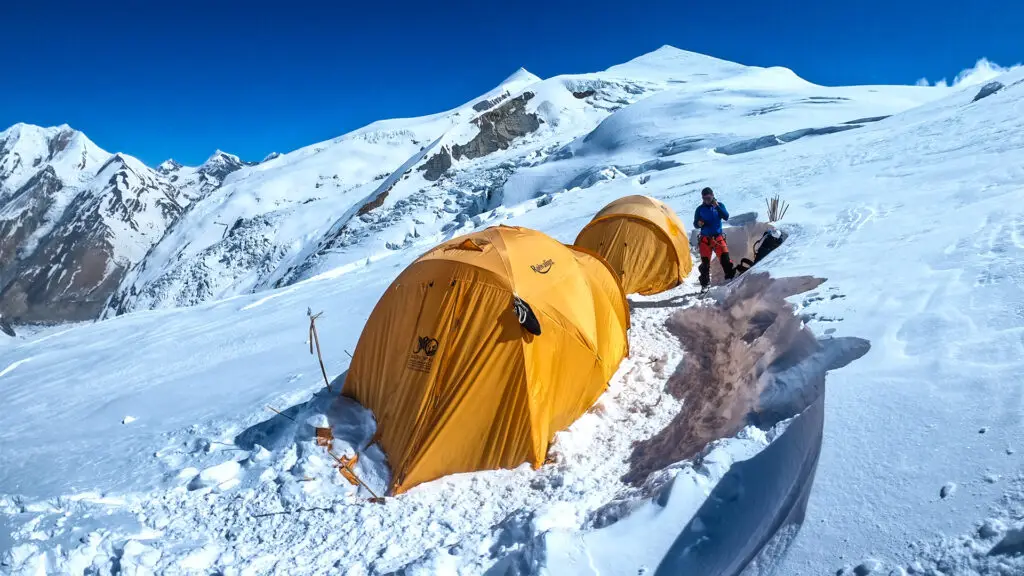
After eating some hot soup, we were ready to begin the ascent to Camp II. My friend Jill and I got ready, and then we walked slowly to Camp II. We established our own pace rather than following that of the other climbers or the guides because it was more conducive to maintaining momentum for longer periods of time at higher elevations.
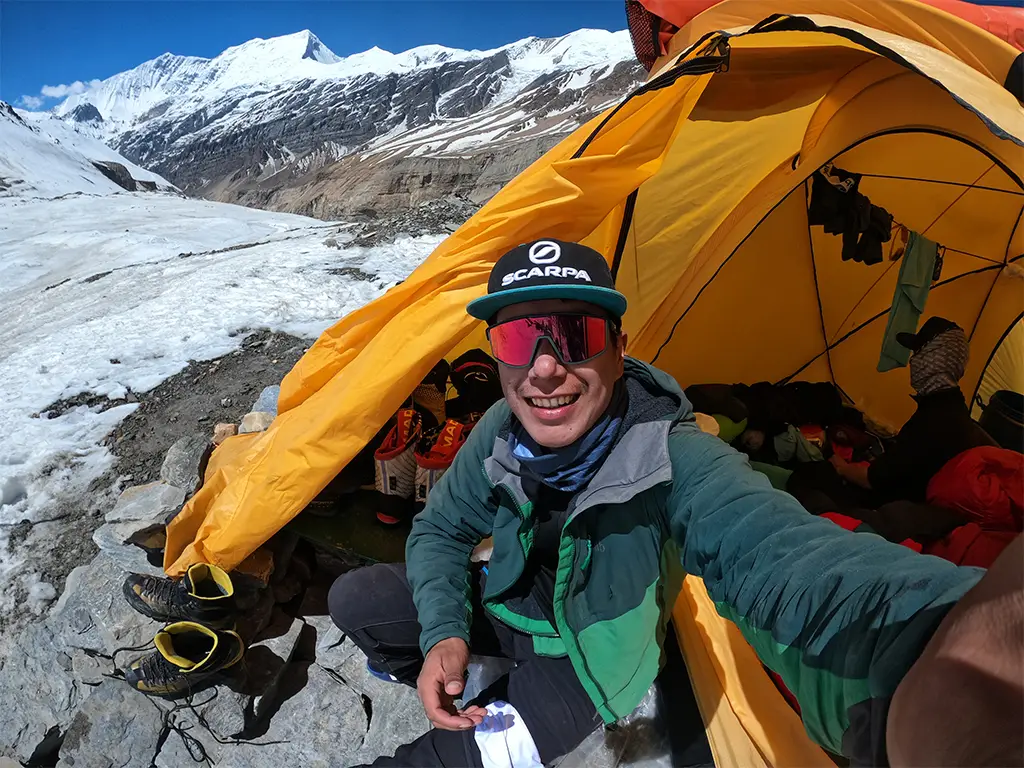
We rested for a few days back at basecamp following the arduous acclimatization rotation to camps I and II. On those days off, we devoted ourselves entirely to recovering our bodies. Our team leader briefed us on the summit push and emphasized the importance of personal and client safety, which has always been and will continue to be my number-one priority. On our final day of rest before making the final push to the peak, we made sure everything was ready to go. The ascent was challenging, but we succeeded in the end. My climbing partner, upon reaching the summit of Dhaulagiri, expressed mixed feelings of joy and emotion. I was quite impressed by the climbing abilities that she displayed during the final push to the summit.
